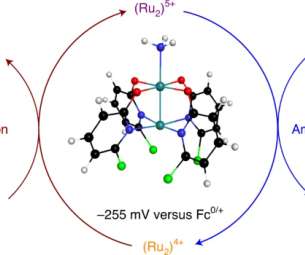UW Madison chemists discover new way to harness energy from ammonia
Green Car Congress
NOVEMBER 12, 2021
A research team at the University of Wisconsin–Madison has identified a new way to convert ammonia to nitrogen gas through a process that could be a step toward ammonia replacing carbon-based fuels. Ammonia has been burned as a fuel source for many years. For a fuel cell, we want an electrical output, not input.





























Let's personalize your content